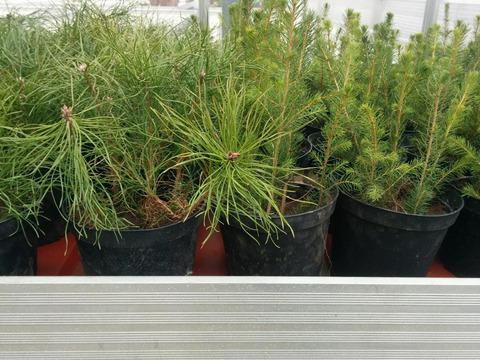当前位置:
X-MOL 学术
›
Funct. Ecol.
›
论文详情
Our official English website, www.x-mol.net, welcomes your feedback! (Note: you will need to create a separate account there.)
Root influence on soil nitrogen availability and microbial community dynamics results in contrasting rhizosphere priming effects in pine and spruce soil
Functional Ecology ( IF 5.2 ) Pub Date : 2021-04-11 , DOI: 10.1111/1365-2435.13797 Jian Li 1 , Saeed Alaei 1 , Moyan Zhou 1 , Per Bengtson 1
中文翻译:

根系对土壤氮有效性和微生物群落动态的影响导致松树和云杉土壤中根际启动效应的对比
更新日期:2021-06-08
Functional Ecology ( IF 5.2 ) Pub Date : 2021-04-11 , DOI: 10.1111/1365-2435.13797 Jian Li 1 , Saeed Alaei 1 , Moyan Zhou 1 , Per Bengtson 1
Affiliation

|
- The rhizosphere priming effect (RPE) is increasingly considered an important regulator of below-ground C and N cycling, with implications for terrestrial ecosystem feedback to global change. Even so, there is a lack of knowledge about the mechanisms underlying RPEs.
- We used novel stable isotope probing methods to investigate RPEs in an experiment with Scots pine and Norway spruce seedlings, two of the most common boreal forest species. We determined root exudation rates, RPEs on SOM decomposition and gross N mineralization, and the contribution of different microbial functional groups to the observed RPEs.
- Pine induced positive and spruce induced negative RPEs on SOM decomposition, while no RPE on gross N mineralization was observed. Negative RPEs in the spruce treatment were attributed to an opportunistic subset of the fungal community that was growing on root-derived 13C while depleting available N, thus reducing the activity of microbial SOM decomposers. In the pine treatment, available N was likely sufficient to support the root-induced decomposition activities of fungal decomposers, resulting in positive RPEs.
- The findings suggest that RPEs, promoted by root stimulation of distinct subsets of the microbial community, can either contribute to conserving the soil C stock or to depleting it, depending on plant species and soil N availability.
中文翻译:

根系对土壤氮有效性和微生物群落动态的影响导致松树和云杉土壤中根际启动效应的对比
- 根际启动效应 (RPE) 越来越被认为是地下 C 和 N 循环的重要调节器,对陆地生态系统对全球变化的反馈具有影响。即便如此,仍然缺乏关于 RPE 背后机制的知识。
- 我们使用新的稳定同位素探测方法在苏格兰松树和挪威云杉幼苗(两种最常见的北方森林物种)的实验中研究 RPE。我们确定了根系分泌率、SOM 分解和总氮矿化的 RPE,以及不同微生物功能群对观察到的 RPE 的贡献。
- 松树在 SOM 分解中诱导了正 RPE,云杉诱导了负 RPE,而在总氮矿化上没有观察到 RPE。云杉处理中的负 RPE 归因于真菌群落的一个机会性子集,该菌群在根部衍生的13 C上生长,同时消耗了可用的 N,从而降低了微生物 SOM 分解者的活性。在松树处理中,可用 N 可能足以支持真菌分解者的根诱导分解活动,导致正 RPE。
- 研究结果表明,由微生物群落不同亚群的根刺激促进的 RPE 可以有助于保护土壤 C 库或消耗它,这取决于植物物种和土壤 N 的可用性。



























 京公网安备 11010802027423号
京公网安备 11010802027423号